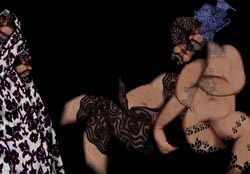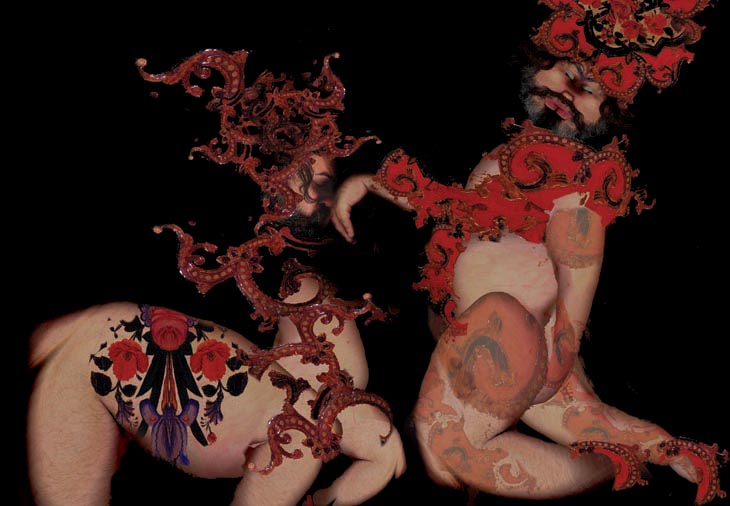
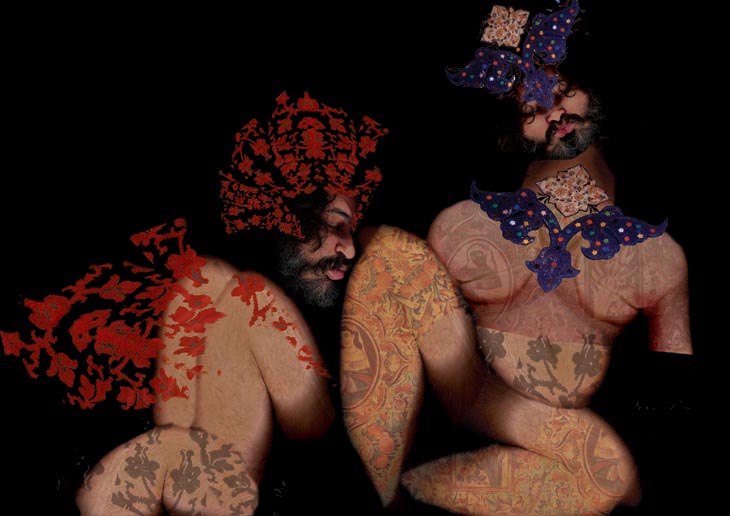

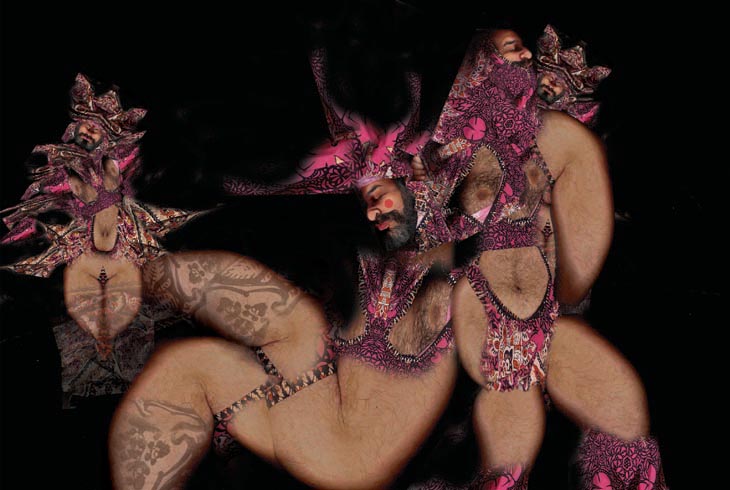
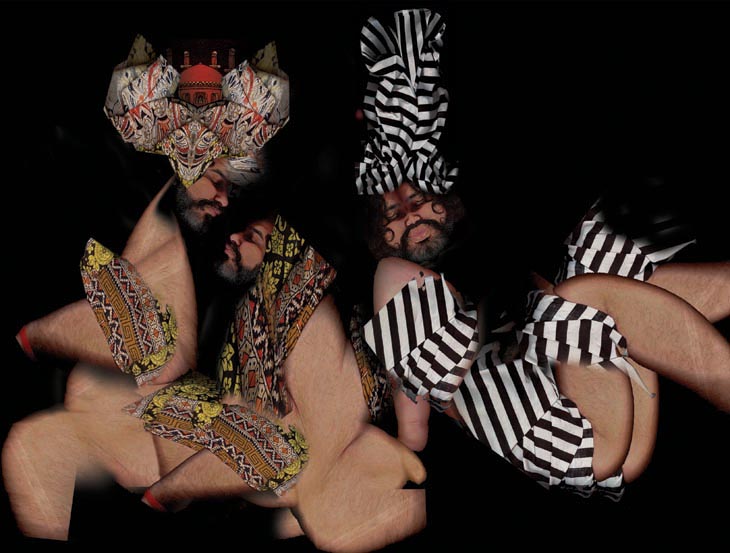
Ramin Haerizadeh
Reminiscent of the traditional motifs of Persian tapestries, architecture, fabrics, and carvings, Ramin Haerizadeh’s work reconfigures the decadence of an ancient civilisation into lusciously futuristic tableaux. Printed as large photographs, his computer manipulated imagery conveys all the sumptuous associations of history within their super-slick modern surfaces. Using these appropriated forms as departure point for invention, Haerizadeh transforms tradition, myth, and legend into the realm of virtual reality, subverting convention through high-impact graphic design and digital modelling.
Haerizadeh’s Men Of Allah are influenced by Taaziye, an historic genre of theatre popularised in the Qajar dynasty (1794-1925). The plays often tell stories of the life of Mohammed, and are still performed during the Muharram observances which mourn the martyrdom of the Prophet’s decedents. In these photos Haerizadeh draws upon this religious ritual to stage scenes with the surreal dynamics of computer animation, displacing the sense of time, place, and gravitas, and conceiving the physical elements of theatre as technical illusion.
One of the key characteristics of Taaziye theatre is that plays are performed exclusively by men, even the lead female roles; in Iran women are discouraged from entering the acting profession. Casting himself in the place of every character, Haerizadeh uses his self-portrait as a means of social critique. Adopting the roles of both villains and victims, Haerizadeh’s bearded face becomes an uncomfortable mediator, transgressing gender, political, and religious boundaries through his highly sensuous images.
Haerizadeh’s Men Of Allah (08) uses technology to serpentine effect. Effusing the hyper-realism of virtual reality, his figures suggest an age-old tradition of street theatre, magic, and puppetry. Entwining these ideas of ancient and futuristic, Haerizadeh’s men evolve as bacchant gods, conveying a literary mysticism in their carnal revelry. Their otherworldliness is transmitted with hypnotic effect as flesh and fabric morph and aggregate in crystalline formations, envisioning a conjoined and refractive entity. Enshrouding the scene with an arabesque mystique, compressed and voluptuous bodies appear to be veiled in a gossamer of their own hair and tattoos, continuing the repetitive pattern formations of their regal pink garb.
In Men Of Allah (05) Haerizadeh reworks the codes of gender, body, and sexuality. Intimately grouped and provocatively posed, the figures gather in a perverse harem; their bodies mutating in contorted forms, neither male nor female, but something much more epicurean and exotic. Haerizadeh approaches his photos with the luxuriance of painting, allowing the rich tones and textures to carry the image into near abstraction. The angular layered segments of his digital alterations create a reference to cubism, while the folded and mutated skin mirrors the drapery effect of the sumptuous clothes.

